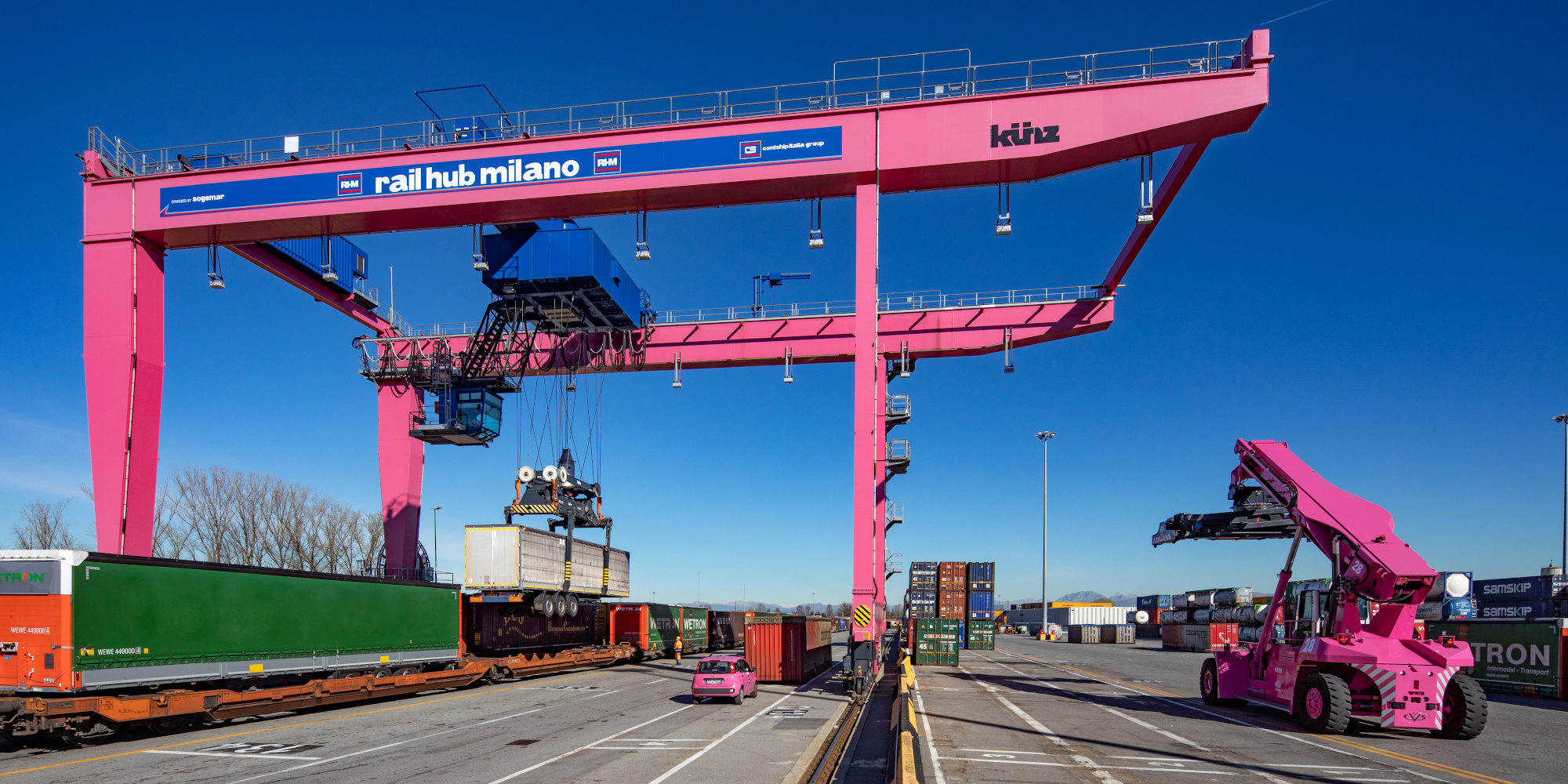Intermodal transport which involves the use of both rail and road is known as combined transport. In this article, we collected some definitions, resources and considerations which can help you learn more about combined transport solutions, resulting from the combination of rail and road connectivity.
A definition of combined transport
Combined transport is a subset of intermodal transport. For a transport to be ‘combined’, most of the haulage must be performed by rail, through inland navigation (on barges) or by sea (short-sea shipping), limiting as much as possible the use of long distance trucking. In Italy, the legislative reference for combined transport is the Ministerial Decree of February 15th, 2001, which implements the European Community directive n. 92/106/CEE of December 7th, 1992.
The Ministerial Decree defines a transport as ‘combined’ when the length of the journey made by rail, waterway or sea is greater than 100 km and the initial or final part of the journey, carried out by road, is included in a radius not above 150 km, as the crow flies from the railway terminal, the river port or the embarkation or disembarkation seaport.
The geographical features of the Italian territory limit the possibility of using inland navigation for combined transport; therefore, with the expression ‘combined transport’ in Italy we typically indicate the combination of road and rail haulage.
Rail haulage represents the ideal transport modality to cover medium and medium-long distances, where frequent rail services are available. In this case, the train provides a competitive service, compared to the traditional alternative of using only trucks.
What are the main advantages of combined transport?
Efficiency: using intermodal cargo units allows transport (UTIs) operators to avoid breaking cargo, reducing the complexity of transferring the goods from one vector to another. When the volumes transported are stable and significant, the use of trucks can be concentrated within a smaller operational radius, centered around one or more intermodal terminals. This allows the truck fleet usage optimization, through shorter and frequent road trips.
Economies of scale: in Europe, rail freight train are usually 550-750 meters long and can transport up to 84 TEUs per trip (a TEU corresponds to a 20 foot container - about 6 meters). This allows the achievement of substantial economies of scale, reducing the cost of transport of single cargo unit.
Cost control: the logistics planning required to provide an efficient combined transport service is based on the negotiation of rail tariffs which remain valid for a certain period of time, agreed upon by the supplier and the customer. This reduces the price volatility that characterizes road haulage, which is heavily affected by temporary imbalances between supply and demand arising during peak seasons or due to a scarcity of trucks and drivers.
Safety: using dedicated intermodal cargo units protects the freight during the transport cycle, reducing the risk of theft and damage to a minimum.
Sustainability: trucking represents, in terms of polluting emissions, and other negative externalities, generated per ton of cargo transported, the least sustainable mode of transport. Trucks emissions can be reduced by using next-gen engines, powered by alternative fuels such as LNG. But the best approach to a sustainable logistics is the one which maximizes the use of rail haulage on medium to long distances, through a progressive modal shift from road to rail.
The increasing awareness of end consumers towards the environmental sustainability of purchased products is pushing an increasing number of manufacturers and retailers to carefully evaluate the environmental footprint of transport solutions. Customers’ awareness - today still focused on production processes, materials and packaging - will soon shift to also include the modes of transport used to distribute products. This is a less tangible and visible factor, which has a huge impact on the carbon footprint of most products.
What are the main limitations of combined transport?
Relevance of volumes and distance: intermodal transport is effective to transfer relevant and relatively constant volumes on medium to long distance routes. For “spot” operations and short distances, road is often preferred, as it tends to be more flexible and immediate.
Cargo balance: combined transport is particularly advantageous when the loads are balanced in both directions. This need is the basis of the work of the MTO (Multimodal Transport Operators), who aggregate the demand for transport to organize services that are as balanced and competitive as possible.
Logistics operations organization and planning: the ability to plan and respect loading windows requires the capability to organize production, storage and transport activities in a structured way. Customers seeking for maximum flexibility of transport operations often see in the road mode an alternative that best suits their needs. Collaboration with experienced logistics operators, shippers and supply chain consultants can however help manufacturers and distributors to improve and optimize their supply chain, enabling them to take advantage of the benefits offered by intermodal transport, fine tuning at the same time their own logistics processes.
Capillarity: the effectiveness of combined transport solutions available in a specific geographical area is linked to the presence of intermodal hubs and to the availability of railway services connecting the points of origin and destination which are relevant for the customer.
Transit time and speed: road haulage often offers a shorter transit time, compared to the combined transport alternative. The advantage of the truck, however, is not linked so much to the average speed of the transport itself, but to the possibility of loading the goods immediately, without having to wait for the departure of the first available train. This difference is eliminated if the route is served by daily or multi-daily rail connections, which can offer loading windows every 8, 12 or 24 hours.
Nature and value of cargo: combined transport is usually an attractive option for medium value containerized cargo. For loads characterized by a high value, but with reduced dimensions and weight, the expensive (but much faster) long-distance air transport service is usually preferred.





